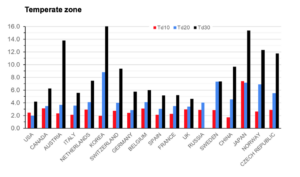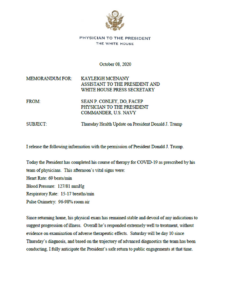On April 20th, I sent this plan for putting Washington back to work to all of Governor Inslee’s senior staff. I got no response, so I thought I would just post it here.
As epidemic curves fall in response to the strict lockdowns, the new challenge facing government agencies here in Washington, around the country, and around the world is getting people safely back to work. Testing will, of course, play a key role in doing that, but the lack of adequate testing supplies has constrained our ability to act. I would like to propose plan that should allow most workplaces to return to normal activity with a minimal expenditure of resources.
To date, we have relied on the necessary, but incredibly inefficient approach of placing the entire population in quarantine because we didn’t know who was infected. The advantage of this plan is that it will identify those who are infected while they are still asymptomatic and isolate them in a way that minimizes the chance of further spread. In other words, it quarantines the infected and those most at risk of infection.
The overall plan as outlined below relies on pooling samples from individual workplaces to identify and isolate infected workers to minimize workplace spread and to indirectly identify and isolate those at risk of infection. Pooling samples allows for testing large portions of the populations on a regular basis with far fewer resources than individual testing.
Pooled Workplace Testing
- Determine the number of samples that can be pooled without substantial impact on the sensitivity of RT-PCR testing for the virus. Current evidence suggests that as many as 48 samples can be pooled, but the optimum level of pooling should be determined and a standard protocol developed.
- State and local health departments work with each workplace in the state to identify and train the person or persons who will conduct sampling for those worksites.
- Initial sampling:
- workers submit to preliminary testing in groups based on their workplace, ideally at their workplace, following strict safety protocols.
- Samples will be pooled in groups of 48 (or whatever number is deemed appropriate) and tested.
- Samples from pools of workers with positive results will be further analyzed to identify and quarantine infected individuals and their contacts.
- Those who test negative or whose pool is negative will be allowed to begin work on the following Monday.
- Regular Weekly Sampling:
- After the initial screening, every Friday thereafter (or at a suitable time for non-standard work weeks.), the workplace will undergo repeat sampling and pooled testing.
- In larger workplaces, employees will be divided into groups based on their network of interactions.
- If a pooled sample is positive, the samples are tested further to identify infected workers. In this case, all members of that pool (and others potentially exposed at that workplace), along with contacts of the infected worker, are quarantined. (Current evidence suggests that two weeks is appropriate, but new evidence may shift this period up or down.)
This protocol will need to be adjusted and adapted to the specifics of each workplace. For those that do not have direct consumer interaction, such as manufacturing, energy, financial services, information technology, and research, the focus would be on regular, pooled workplace testing as described above. Consumer facing businesses, such as grocers, personal services, and retailers, an additional component of consumer-retail tracing would be required to contact customers. A cell phone app could be developed and introduced to track the businesses entered by a cell phone owner and let them know if there has been a positive test at any workplace they have entered. If so, they can be tested and, if appropriate, quarantined.
This approach will allow a relatively normal return to work for a large fraction of the economy and can be maintained until a vaccine has been developed. Anti-body testing, as it becomes available, can be introduced with a goal of testing the entire population. This could allow those with positive antibodies to be excluded from pooled testing and to work without a mask.
For many reasons, it is essential to restart the economy as soon as possible. This approach provides a framework for allowing that to happen with constant active surveillance that will ensure that emergent cases are identified rapidly and only those who are infected or at direct risk of becoming infected will be quarantined. In other words, this approach provides a way to isolate only those who truly need to be isolated and will catch them early in the course of the infection to minimize risk of asymptomatic spread. We can save lives by prevention without destroying lives economically.


